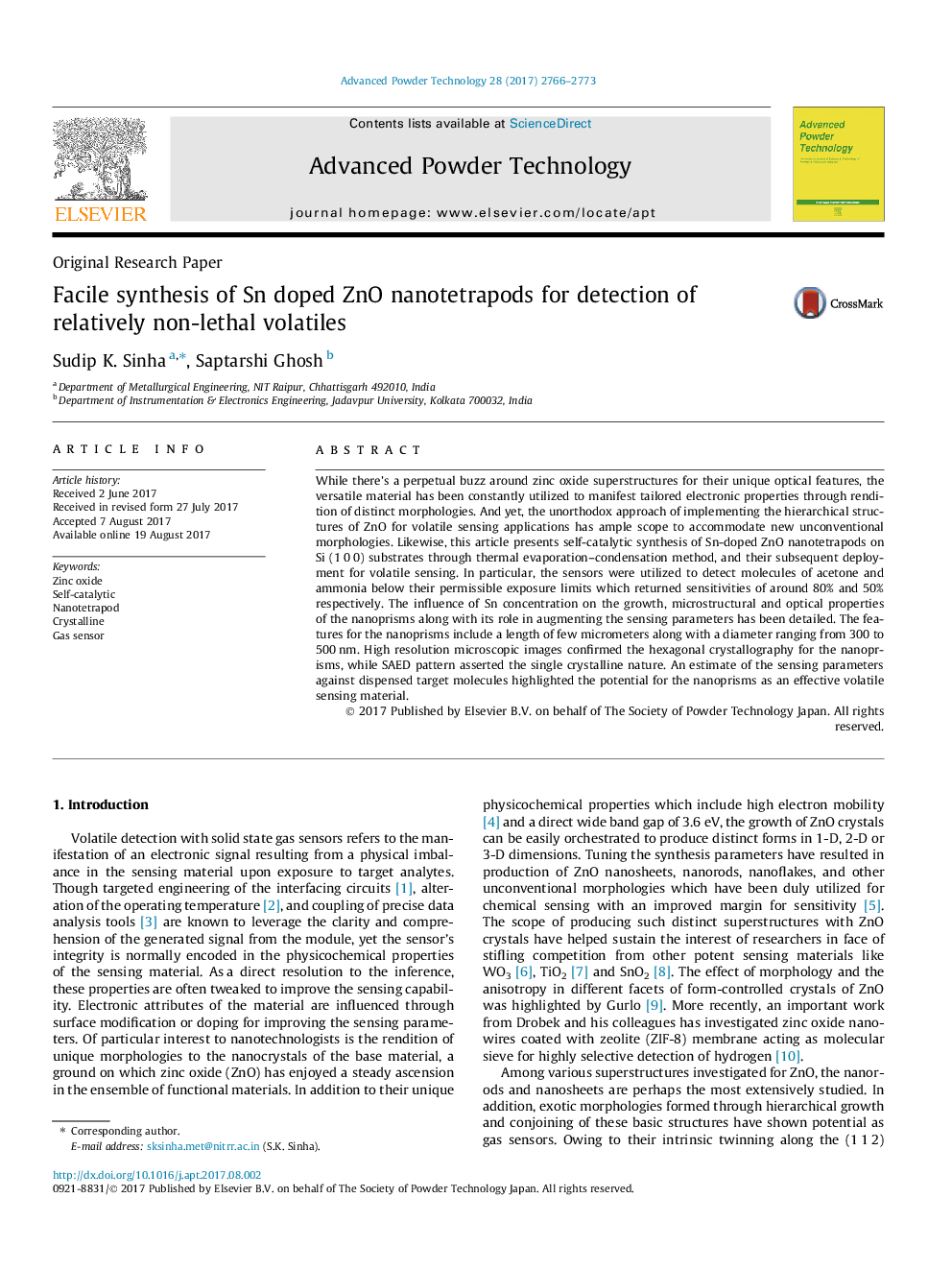| Article ID | Journal | Published Year | Pages | File Type |
|---|---|---|---|---|
| 6464591 | Advanced Powder Technology | 2017 | 8 Pages |
â¢Pure and Sn-doped ZnO is deposited by thermal evaporation-condensation method.â¢Growth morphology, defect structure and the formation mechanism has been discussed.â¢Sensitivity enhances owing to the higher defect density and total surface area.â¢Peak response to CH3COCH3 and NH3 is obtained at 350 °C and 400 °C, respectively.
While there's a perpetual buzz around zinc oxide superstructures for their unique optical features, the versatile material has been constantly utilized to manifest tailored electronic properties through rendition of distinct morphologies. And yet, the unorthodox approach of implementing the hierarchical structures of ZnO for volatile sensing applications has ample scope to accommodate new unconventional morphologies. Likewise, this article presents self-catalytic synthesis of Sn-doped ZnO nanotetrapods on Si (1Â 0Â 0) substrates through thermal evaporation-condensation method, and their subsequent deployment for volatile sensing. In particular, the sensors were utilized to detect molecules of acetone and ammonia below their permissible exposure limits which returned sensitivities of around 80% and 50% respectively. The influence of Sn concentration on the growth, microstructural and optical properties of the nanoprisms along with its role in augmenting the sensing parameters has been detailed. The features for the nanoprisms include a length of few micrometers along with a diameter ranging from 300 to 500Â nm. High resolution microscopic images confirmed the hexagonal crystallography for the nanoprisms, while SAED pattern asserted the single crystalline nature. An estimate of the sensing parameters against dispensed target molecules highlighted the potential for the nanoprisms as an effective volatile sensing material.
Graphical abstractDownload high-res image (190KB)Download full-size image
